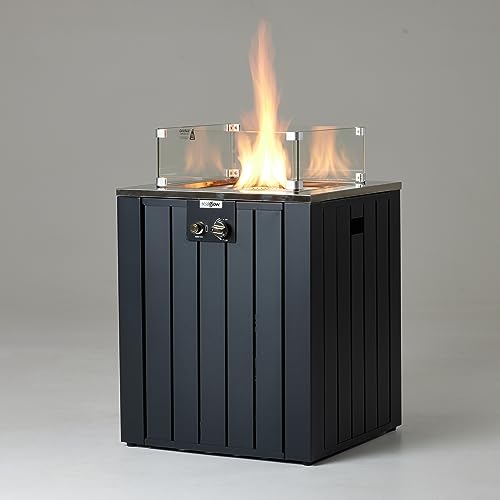Buying Gas Radiant Heaters: A Comprehensive Guide
Gas radiant heaters have gained popularity in recent years for their performance and capability to provide instantaneous warmth. As more property owners and businesses try to find ways to keep their spaces comfy, comprehending the functions, advantages, and factors to consider when acquiring these heating systems can be very useful. This short article delves into the intricacies of gas radiant heaters, helping prospective purchasers in making informed choices.
What are Gas Radiant Heaters?
Gas radiant heaters are gadgets that utilize propane or gas to discharge heat directly into a room. Rather than heating the air, they warm items and individuals in their vicinity, offering convenience more rapidly and efficiently. Efficient Heaters are popular for both indoor and outdoor settings due to their versatility and effectiveness.
Key Features of Gas Radiant Heaters
- Direct Heating: Unlike standard heaters that warm the air, gas radiant heaters provide direct heat, making them an efficient option for quickly warming up spaces.
- Mobility: Many models are offered as portable units, enabling them to be easily moved from one area to another.
- Fuel Variety: Gas radiant heaters can be powered by natural gas or propane, giving users versatility based on accessibility and preference.
- Adjustable Settings: Most gas radiant heaters featured adjustable heat settings, allowing users to tailor the level of warmth based on their needs.
Advantages of Gas Radiant Heaters
- Energy Efficiency: These heaters transform gas into heat effectively, leading to lower energy bills compared to electric heaters.
- Quick Heating: Radiant heat is felt almost right away, making these heaters suitable for abrupt temperature level drops.
- Low Maintenance: Gas radiant heaters normally require less maintenance than electric models, making them a problem-free option.
- Eco-friendly: When powered by tidy natural gas, these heaters can be a more ecologically sustainable choice compared to other heating approaches.
Types of Gas Radiant Heaters
When it pertains to selecting a gas radiant heater, it's important to understand the various types offered. Below are the most typical options:
- Indoor Gas Radiant Heaters: Designed for indoor areas, these heaters are normally vented or unvented and frequently come with built-in safety features.
- Outdoor Gas Radiant Heaters: Commonly used in patio areas or outdoor dining areas, these heaters are created to withstand the elements.
- Wall-Mounted Gas Radiant Heaters: A space-saving option, these systems are ideal for smaller areas and can be outfitted with various heat outputs depending on the area's needs.
- Freestanding Gas Radiant Heaters: These portable designs can be used in different places, perfect for those who need flexibility.
Purchasing Guide: How to Choose the Right Gas Radiant Heater
When purchasing a gas radiant heater, numerous elements must be thought about to ensure you choose the ideal model for your space:
1. Heating Capacity
- Determined in BTUs (British Thermal Units), the heater's capability figures out how much area it can successfully warm. Purchasers need to evaluate their particular needs based upon room size.
| Room Size (sq ft) | Recommended BTUs (for Gas Radiant Heaters) |
|---|---|
| 100 - 200 | 5,000 - 10,000 BTUs |
| 200 - 400 | 10,000 - 20,000 BTUs |
| 400 - 600 | 20,000 - 30,000 BTUs |
| 600 - 800 | 30,000+ BTUs |
2. Type of Gas
- Consider whether you will be using propane or gas, as various heaters accommodate various fuel types.
3. Security Features
- Search for models geared up with security features such as automated shut-off valves, tip-over defense, and oxygen deficiency sensing units.
4. Setup Requirements
- Some heaters may require expert setup, especially vented designs. Make sure to consider the expenses and requirements connected with installation.
5. Mobility
- If flexibility is vital, consider portable models that can be easily moved from one area to another.
Installation and Maintenance
Gas radiant heaters are usually simple to set up, particularly portable models. Nevertheless, vented options might require professional installation to guarantee they satisfy local security codes.
Maintenance usually includes:
- Regular cleaning to prevent dust buildup.
- Examining gas connections and fittings for leakages.
- Making sure safety features are functional.
Pointer: Regular checks around the system can help extend its lifespan and keep safety.
Regularly Asked Questions (FAQs)
Q1: Are gas radiant heaters safe for indoor use?A1: Yes
, as long as they are properly vented and geared up with essential security features, they can be safely used indoors.
Q2: Can gas radiant heaters be used in enclosed spaces?A2: Unvented gas heaters can present dangers in enclosed areas due to prospective suffocation or carbon monoxide buildup. Constantly guarantee sufficient ventilation. Q3: How do I understand what size heater I need?A3: The proper size depends upon the location you intend to heat. Refer to the BTU chart
above to identify your requirements. Q4: What is the distinction between propane and gas heaters?A4: The primary distinction depends on their energy source
; propane is delivered by means of tanks, while gas is generally piped into homes. Q5: How can I take full advantage of efficiency?A5: Ensure the heater is properly sized for your space, keep it frequently, and consider using it in combination
with other heating methods for optimum comfort. Gas radiant heaters can be an excellent addition to any home or business, providing energy-efficient and fast heating solutions. By comprehending the various types, features, and factors to consider
when purchasing, purchasers can make informed choices that meet their heating needs. With the right choice, these heaters offer convenience, reliability, and an inviting environment throughout chillier seasons.

